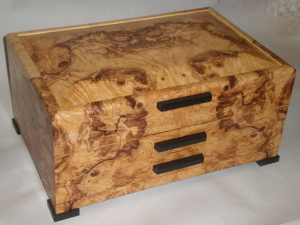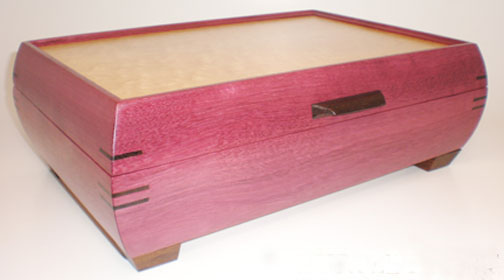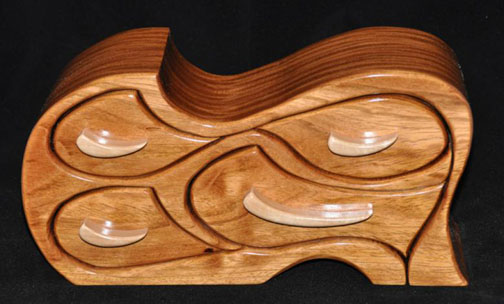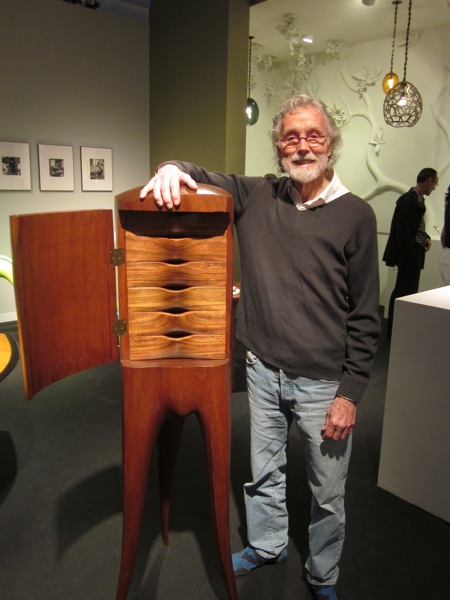
New jewelry is like new love. Once acquired, it’s difficult to part with. We want to take it everywhere. We struggle to keep our hands off it. Alas, the moment comes when it must be unfastened and put away.
One option is to return the beloved jewel to its velvet box and lock it in a safe. Very smart. Infinitely better than dropping it on the dresser where your cat can play hockey with it. (I speak from experience.)
My personal choice: put the treasure where it’s easily retrieved, in a container worthy of its contents. If you collect handcrafted art jewelry, it belongs in a handcrafted art jewelry box.

Wood has become the standard material for jewelry boxes, from craftshows to Target. Today, many woodworkers and furniture designers use exotic woods our grandparents never heard of, and apply aesthetics that evolved in the latter half of the twentieth century.

One of the most famous contemporary wood craftsmen is Wendell Castle – and, yes, he makes jewelry boxes. These days they look something like this:

In Wendell Castle’s hands, a jewelry box becomes contemporary sculpture. A collector of cutting-edge art jewelry couldn’t ask for a more appropriate vessel. It’s also among the most accessible objects in the repertoire of Castle, one of the most inventive furniture designers alive today. His work has been in most major American art museums from the Metropolitan to the Art Institute of Chicago.
“It’s all a question of scale,” he says of his jewelry boxes. Castle’s boxes tend to reflect the aesthetic of the tables and chairs he’s designing. Thus, if you like the lacquered cone desk- and table-legs he became famous for in the early ’80s, you’ll probably go for the piece he cheekily dubbed Late Proposal for the Rochester Convention Center in the Form of a Jewelry Box. Likewise, if you prefer his metal platforms from the ’90s, you’ll covet the mahogany and ebony boxes that seem to float mid-air, carried by a wave of textured bronze.
The one pictured above is the most recent of Castle’s jewelry boxes, and it’s just exactly to my taste. This artist’s boxes may look like sculptures, but they all conceal places to hold rings, necklaces, and brooches, with various drawers and sometimes two levels of trays. “I will never know what people do with these things after they leave my studio, whether they use them or just look at them as objects,” Castle says. “But, oh yes, they’re all fully functional.”
My thanks to Lindsay Pollock for letting me use the photo of Wendell Castle. Check out Lindsay’s wonderful blog Art Market Views.
Related posts:
Thinking outside the jewelry box
Antique Chinese hair ornaments
More work by featured artists:

